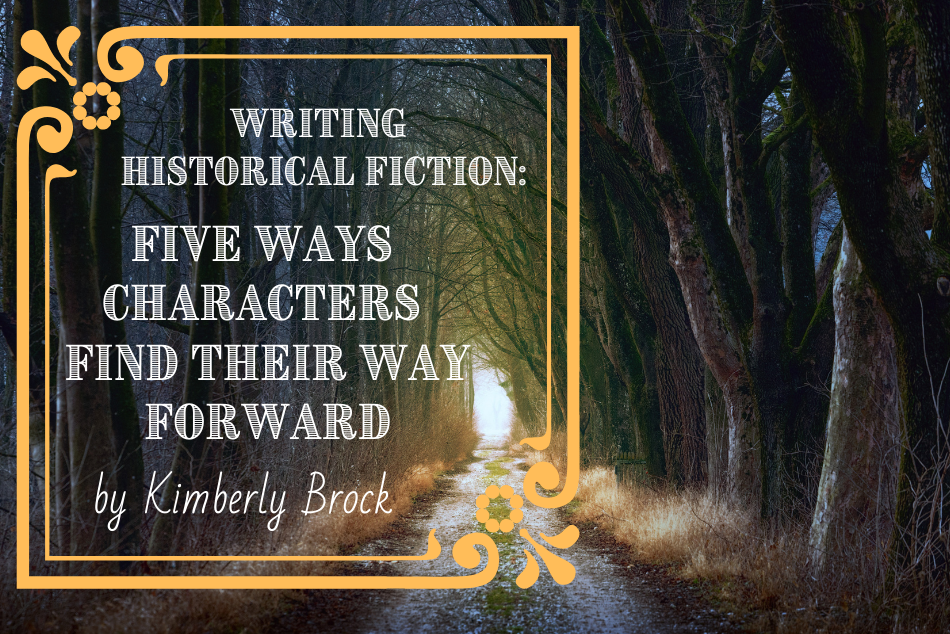Following Bread Crumbs
by Kimberly Brock
Historical fiction is like a magic portal where the reader can glimpse a life set against a backdrop of so much detail and still suddenly be faced with the unknown. It creates unmatched anticipation for what’s to come and all the ways it could go right or wrong. But more importantly, there’s the chance that a character could make unexpected choices that mean even if a reader has the facts about history, even if they feel they are experts in everything about the people navigating it, they could be wrong. Historical fiction is about possibilities.
Any good story starts on a precarious path, but with historical fiction the path is one that has been walked before the reader’s time. It would seem the way forward would be obvious, but that’s the thing about a journey, internal or external–every step is a risk for the person who is setting out. Good historical fiction allows the reader to step into the boots of a character who must consider those woods, dark and deep, anew. For although the reader may know where the path will lead, a human being is always capable of surprising and enlightening us by how their particular journey is made.
Setting Out
With history, we have documented, researched and believe we know The Way. With fiction, we are as lost as the character, setting out with our lonely lantern, with only The Why to guide us.
Historical Fiction means that although the reader has the advantage of anticipating the path, they’re still in for an internal story of intrigue. That first step is likely to be a doozy, most often because the path is not what was expected or the journey was forced upon a character who would rather stay right where they were until change left them disoriented, homeless, wandering and fearful of an uncertain future.
Looking Back
Because they are uncertain, the first steps in a historical fiction journey may be halting or a character may start off at a sprint. But in that pivotal moment when a set course is called into question, there will be a pause, a breath, a moment to glance over the shoulder at all that’s left behind. Given the confines of time, historical characters will have unique perspectives that will sometimes limit their ideas about of the world, but also mean memory can reach farther into the past than the average modern reader. Well-researched experiences of people and places, science and faith, can inform the lives on the page in particular ways that will compel judgement by contemporary standards. But when characters reach back to touchpoints that expand their understanding of one another, in that moment, the real magic happens. Time collapses onto itself. The magic portal becomes a mirror.
Connecting Across Time
At its best, historical fiction appears to be this simple reflection on the past. But while these stories can encourage readers to gaze with ease upon settings and characters that aren’t a complete mystery, it should then offer opportunities to consider perspectives that might otherwise be too intimidating or foreign to face. Written with respect and honesty, stories set in the past allow readers to find themselves standing in situations that seem unimaginable in our own time, with challenges gracefully brought home by a skillfully rendered character. And in that reflection, we should find ourselves.
Looking Ahead
Those similarities connect our stories through all of time–for better or worse, from one end of the path to the other–and become the crumbs of empathy that glow along the twisted path of antiquity. These are the powerful assurances that someone walked this way before. From this point, historical fiction characters rely on these signs along the challenging way to know they are not alone, discovering connections to the past within themselves, gathering courage to take the next step until they arrive at an inevitable conclusion: a place of dreams. Historical fiction characters move forward because the journey inspires visionaries.
Where Dreams Lead
While established timelines present readers with a practical map of dates and events and plots that may seem predictable from the very first sentence, meaningful historical fiction is actually a journey of the heart, a love affair with the mystery of humanity. It’s about the breadcrumbs themselves, not the path. So that in turning that last page and lifting our eyes, the way forward becomes a little less uncertain, because we find we have discovered one another. Because just as we imagine them, historical fiction characters find their way forward because they can imagine us.
Have you tackled writing historical fiction? What have you learned from the process? Let’s talk about it on the Career Authors Facebook page!

 Kimberly Brock is the bestselling author of The Lost Book of Eleanor Dare and her award-winning debut, The River Witch. She is the founder of Tinderbox Writers Workshop and has served as a guest lecturer for many regional and national writing workshops including at the Pat Conroy Literary Center. She lives near Atlanta with her husband and three children.
Kimberly Brock is the bestselling author of The Lost Book of Eleanor Dare and her award-winning debut, The River Witch. She is the founder of Tinderbox Writers Workshop and has served as a guest lecturer for many regional and national writing workshops including at the Pat Conroy Literary Center. She lives near Atlanta with her husband and three children.





